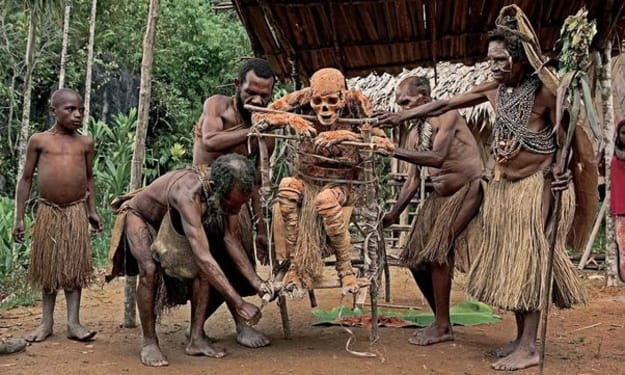
### The Evolution of Cricket: From Early Beginnings to Modern Glory
Cricket, a sport beloved by millions worldwide, has a rich history that spans centuries, evolving from a casual pastime to a highly professional and globally celebrated game. This essay delves into the origins, development, and contemporary significance of cricket, highlighting key milestones and influential figures along the way.
#### Origins and Early Development
The origins of cricket can be traced back to the 16th century in southeastern England, where it started as a children's game. The first definite reference to cricket comes from a court case in 1598, where it was mentioned that "creckett" was played on common land in Guildford around 1550. By the 17th century, cricket had evolved into an adult sport, with the first known organized match taking place in 1611.
Cricket's popularity surged in the late 1600s, especially in the southern counties of England. This period saw the formation of the first professional teams and the establishment of early cricket clubs. The game was primarily played by aristocrats and rural workers, with matches often associated with large wagers and social gatherings.
#### The Birth of Modern Cricket
The 18th century marked significant advancements in cricket. The Hambledon Club, founded in the 1760s, became the sport's premier club and was instrumental in developing early rules and techniques. It was during this time that cricket began to resemble its modern form, with the introduction of the straight bat, as opposed to the earlier curved design.
In 1744, the first known codification of the Laws of Cricket was introduced, laying the groundwork for standardized play. These laws were further refined by the Marylebone Cricket Club (MCC), established in 1787, which became the custodian of cricket's rules. The MCC's influence ensured a more consistent and organized approach to the game, contributing to its spread beyond England.
#### Cricket Goes International
The 19th century saw cricket transcend national boundaries. The first recorded international match took place in 1844 between the United States and Canada. However, the most significant development was the establishment of Test cricket, with England and Australia playing the first Test match in 1877. This historic encounter marked the beginning of an enduring rivalry and the tradition of the Ashes series, initiated in 1882.
The expansion of the British Empire facilitated cricket's introduction to other parts of the world, particularly in the Indian subcontinent, the Caribbean, and Africa. Cricket became a means of cultural exchange and colonial identity, with local populations adopting and adapting the game.
#### The Golden Age and Beyond
The early 20th century is often referred to as cricket's Golden Age, characterized by legendary players and memorable matches. Figures such as W.G. Grace, an English all-rounder, and Sir Donald Bradman of Australia, whose batting average of 99.94 remains unmatched, became icons of the sport.
Cricket's governing structures also evolved, with the Imperial Cricket Conference (now the International Cricket Council, or ICC) founded in 1909 to oversee international competition. The ICC's role grew over the decades, promoting the game's development and organizing global tournaments.
#### The Rise of One-Day and T20 Cricket
While Test cricket remained the pinnacle, the mid-20th century saw the emergence of limited-overs cricket, addressing the need for more spectator-friendly formats. The first One Day International (ODI) was played in 1971, introducing a shorter, more dynamic version of the game. This innovation culminated in the inaugural Cricket World Cup in 1975, which West Indies won.
The late 20th and early 21st centuries witnessed another revolutionary change with the advent of Twenty20 (T20) cricket. This format, with matches lasting around three hours, proved immensely popular, attracting new audiences and significant commercial interest. The first T20 World Cup was held in 2007, with India emerging as champions, further boosting the format's appeal.
#### Cricket in the 21st Century
The 21st century has been marked by globalization and commercialization, transforming cricket into a multi-billion-dollar industry. The Indian Premier League (IPL), launched in 2008, epitomizes this shift, combining high-octane cricket with entertainment and substantial financial rewards. The IPL's success has spurred similar leagues worldwide, enhancing the game's reach and popularity.
Technological advancements have also played a crucial role, with innovations such as the Decision Review System (DRS) and Hawk-Eye enhancing the accuracy and fairness of umpiring decisions. These developments have contributed to the sport's modernization, making it more appealing to tech-savvy younger generations.
#### Women's Cricket
Women's cricket has experienced significant growth and recognition in recent years. The ICC Women's Cricket World Cup, first held in 1973, has become a major event, showcasing the talents of female cricketers. The establishment of professional leagues, such as the Women's Big Bash League (WBBL) in Australia, has further elevated the profile of women's cricket, providing greater opportunities and visibility.
#### Cricket as a Global Phenomenon
Today, cricket is played and followed by millions across diverse cultures and regions. Countries like India, Pakistan, Australia, England, and South Africa boast passionate fan bases and formidable teams. The sport's ability to bring people together, transcend social and cultural barriers, and inspire national pride is unparalleled.
Cricket's global appeal is reflected in its inclusion in multi-sport events like the Commonwealth Games and its bid for inclusion in the Olympics. The ICC continues to expand the game's footprint, promoting it in non-traditional markets and supporting the growth of associate nations.
#### Conclusion
From its humble beginnings on English village greens to its status as a global sporting powerhouse, cricket's journey is a testament to its enduring appeal and adaptability. The sport's rich history, marked by legendary players, iconic matches, and transformative innovations, has shaped it into a beloved pastime and a symbol of cultural unity. As cricket continues to evolve and reach new heights, its legacy as a game that transcends boundaries and brings joy to millions remains firmly intact.
About the Creator
Enjoyed the story? Support the Creator.
Subscribe for free to receive all their stories in your feed. You could also pledge your support or give them a one-off tip, letting them know you appreciate their work.





Comments
There are no comments for this story
Be the first to respond and start the conversation.